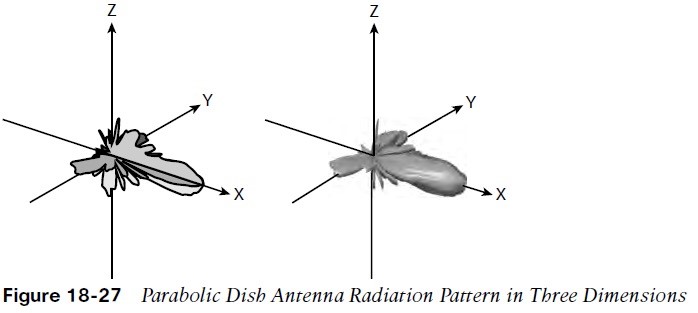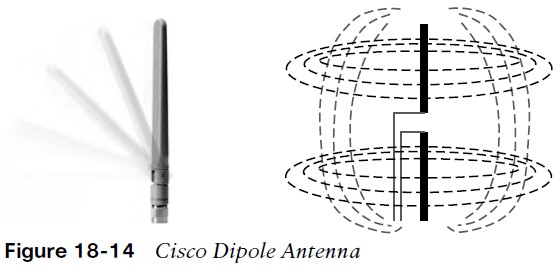
Leveraging Antennas for Wireless Coverage
various antenna types and explains how each one alters the RF coverage over an area.
- One type of antenna cannot fit every application.
- Antennas come in many sizes and shapes, each with its own gain value and intended purpose.
Radiation Patterns
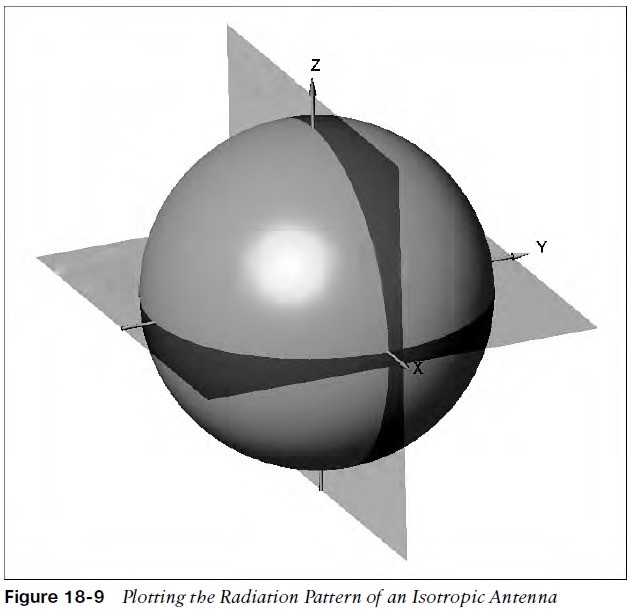
- Antenna gain: a comparison of one antenna against an isotropic antenna, measured in dBi (decibel-isotropic).
- An isotropic antenna does not actually exist. is ideal, perfect, impossible to construct.
- Shaped like a tiny round point.
- The energy produced by the antenna takes the form of an ever-expanding sphere.
- A plot that shows the relative signal strength around an antenna known as the radiation pattern.
Radiation Patterns
- The XY plane, which lies flat along the horizon, is known as the H plane (mặt cắt ngang), or the horizontal (azimuth) plane.
- The XZ plane, which lies vertically along the elevation of the sphere, E plane, or elevation plane.
- The outline of each plot recorded on a polar plot.
- The antenna placed at the center of the polar plots.
- As you decide to place APs in their actual locations, you might have to look at various antenna patterns and try to figure out whether the antenna is a good match for the environment.
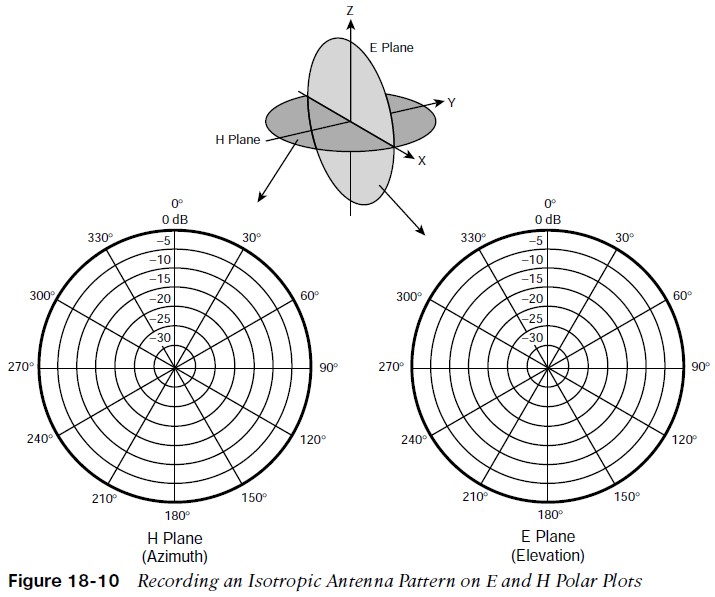
Gain
- Antenna amplify or add gain to the signal by shaping the RF energy as it is propagated into free space.
- A measure of how effectively it can focus RF energy in a certain direction.
- Think of a zero gain antenna producing a perfect sphere. If the sphere is made of rubber, you could press on it in various locations and change its shape. As the sphere is deformed, it expands in other directions.
- The gain is lower for omnidirectional antennas, which are made to cover a widespread area, and higher for directional antennas, which are built to cover more focused areas.
- The gain is typically not indicated on either E or H plane radiation pattern plots. The only way to find an antenna’s gain is to look at the manufacturer’s specifications.
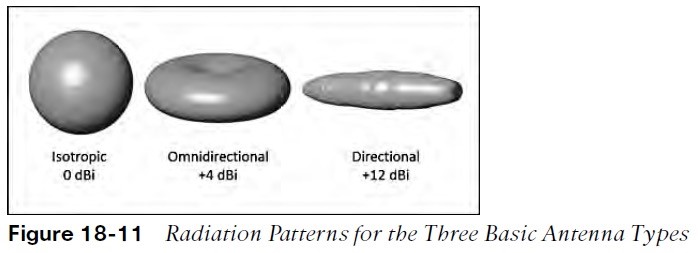
Polarization
- If the wire is pointing vertically it will produce a wave that oscillates up and down in a vertical direction.
- The electrical field wave’s orientation called the antenna polarization.
- Antennas that produce vertical oscillation vertically polarized; those that produce horizontal oscillation horizontally polarized.
- Antenna polarization at the transmitter must be matched to the polarization at the receiver. If the polarization mismatched, the received signal can be severely degraded.
- The transmitter and receiver along the top both use vertical polarization, so the received signal optimized.
- The pair along the bottom mismatched, causing the signal to be poorly received.
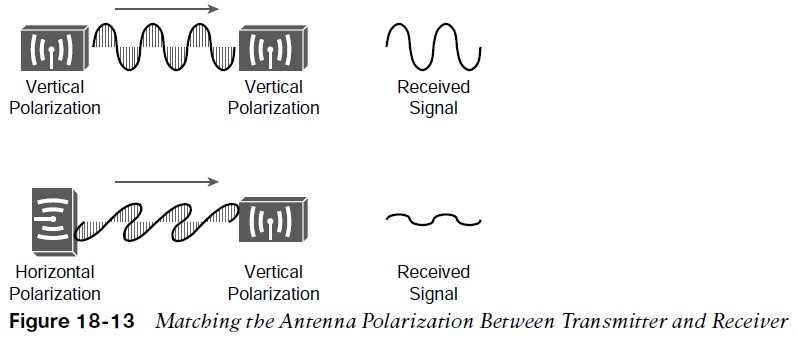
Omnidirectional Antennas

Propagate a signal equally in all directions away from the cylinder but not along the cylinder’s length. The result is a donut-shaped pattern that extends further in the H plane than in the E plane. This type of antenna is well suited for broad coverage of a large room/floor area, with the antenna located in the center. Because an omnidirectional antenna distributes the RF energy throughout a broad area, it has a relatively low gain. A common type of omnidirectional antenna is the dipole. As its name implies, the dipole has two separate wires that radiate an RF signal when an alternating current is applied across them. Gain of around +2 to +5 dBi.
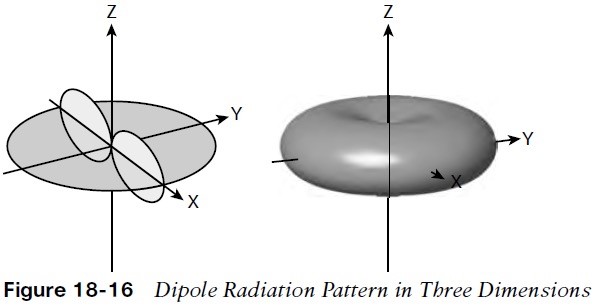
Omnidirectional Antennas
To reduce the size of an omnidirectional antenna, many APs have integrated antennas hidden inside the device’s smooth case.
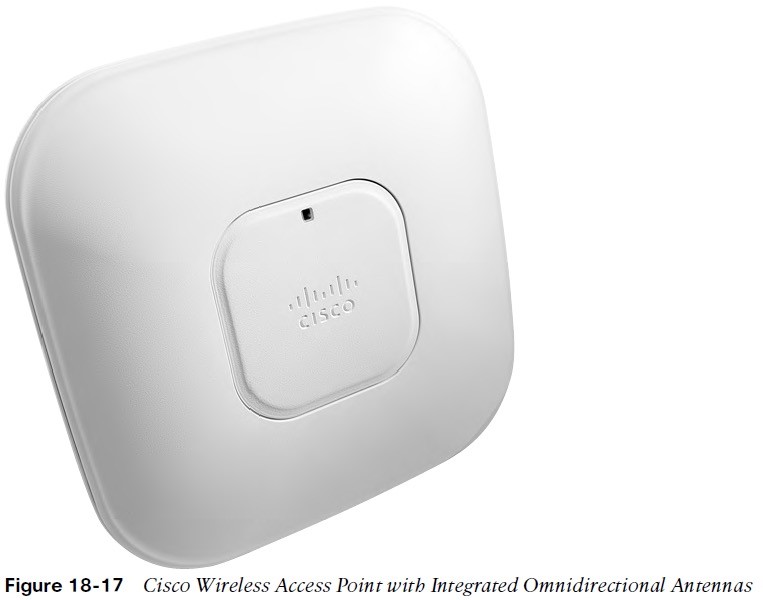
the AP has six tiny antennas hidden inside
Directional Antennas
- Have a higher gain than omnidirectional one because they focus the RF energy in one direction.
- Typical applications include elongated indoor areas, a long hallway or the aisles in a warehouse.
- Used to cover outdoor areas out away from a building or long distances between buildings.
- If they mounted against a ceiling, pointing downward, they can cover a small floor area to reduce an AP’s cell size.
- Gain of about 6 to 8 dBi in the 2.4 GHz band and 7 to 10 dBi at 5 GHz.
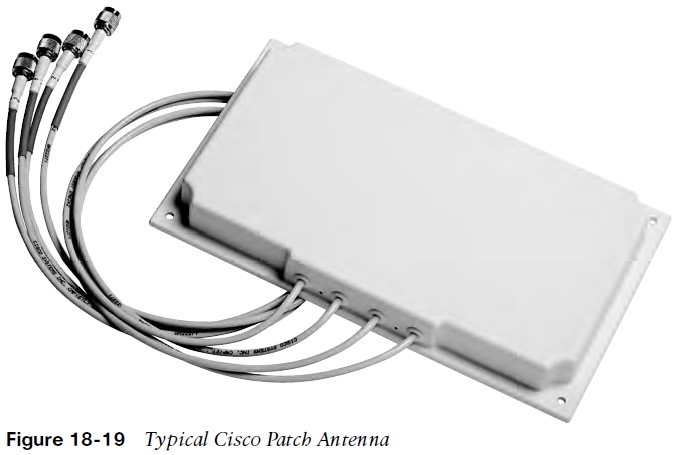
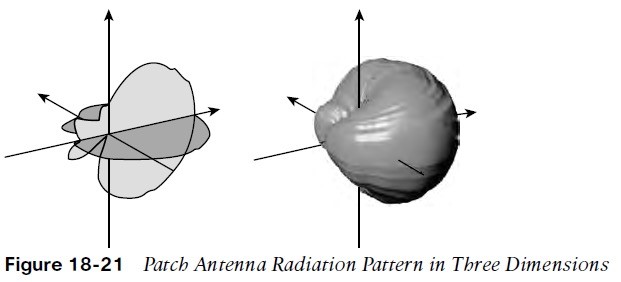
Yagi Antennas
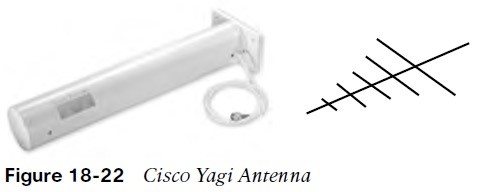
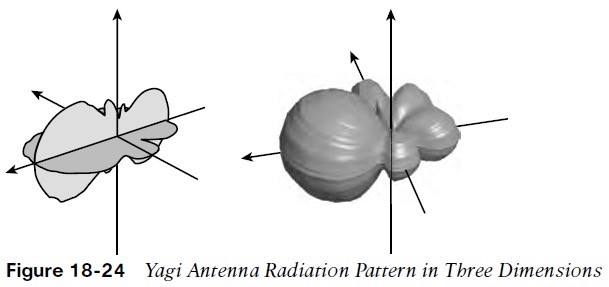
- Actually made up of several parallel elements of increasing length.
- Produces a more focused eggshaped pattern that extends out along the antenna’s length.
- A gain of about 10->14 dBi.
Parabolic Dish Antennas
- Highly directional antennas focus the RF energy along one narrow elliptical pattern.
- The parabolic shape causes any waves arriving from the LoS reflected onto the center antenna element that faces the dish.
- Gain of between 20 and 30 dBi—the highest of all the antennas.
